Skipton History in Photos
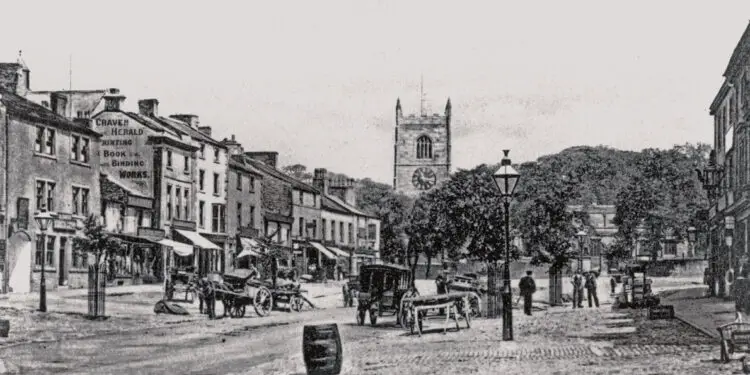
Skipton History Tour offers an insight into the fascinating history of this Yorkshire town. Author Peter Ellwood guides us around its well-known streets and buildings, showing how its famous landmarks used to look and how they have changed over the years, as well as exploring its lesser-known sights and hidden corners. Here’s a selection of the historical highlights in old photos…
HOLY TRINITY CHURCH
At the head of the High Street is the parish church of the Holy Trinity. This building, like its neighbouring castle, has been modified, extended and refurbished over the centuries and suffered bombardment during the Civil War. It has also suffered the natural hazards of fire and lightning, the last of which occurred in 1925, causing the destruction of the organ and damage to the roof. The clock was installed before 1803 and the porch was added in 1866. Inside the church there are numerous Clifford family memorials dating from the sixteenth and seventeenth centuries, including the impressive Clifford tombs. This old photo shows the front churchyard with tombstones in place. The current churchyard, with its beautifully tended lawns, shrubs and plants, dates back to 1945 when it was agreed jointly by the Skipton UDC and the church to remove the gravestones from the front of the church to form a terrace at the back.
THE CATTLE FAIR
Before we move on to the Town Hall, have a look back at the church gate from where we have just walked. This 1905 photo of the cattle fair at the top of the High Street is full of atmosphere. The cattle are loose while the sheep are kept in pens. Members of the farming community chat, while in the foreground some interested characters spectate as Skipton photographer John Smith takes this classic photo. The Castle Inn is clearly visible on the left and after such cattle markets the many public houses on Skipton’s High Street would be full and doing good business.
SHEEP STREET
This 1914 photograph of Sheep Street before the First World War shows it has remained largely unaltered. The cobbled street is split off from the High Street by Middle Row. This was an era when shopkeepers proudly displayed their goods, as illustrated by Lipton the grocer, with a mouth-watering selection of fare. Just before Lipton’s was Forts, the drapers shop, which remained a ladies outfitters after 1947 when it was sold to Mr Atkinson of Leeds. It later became Greenwoods and is now Costa Coffee, one of Skipton’s many shops specialising in the sale of this widely consumed stimulant!
SKIPTON SHOW, 1870
This is the earliest known photograph of the High Street, on the occasion of the Skipton Show in 1870, an annual Craven Agricultural Show that was held from 1855 to 1929. The Barclays Bank building, formerly Martins Bank Ltd, can be seen on the right but the Midland Bank building (1888), now HSBC, has not been built yet. On the corner of Middle Row, William Smith had succeeded his father’s painting, plumbing and glazing business, which continued until 1880, when the firm moved to Court Lane and William Mattock took over this shop for his corn merchant’s business. The shop has passed through numerous hands: Mr Harry Mattock, Mr J. G. Mattock, the County of York Agricultural Co-op, A. J. Clayton, George Leatt, Roy Marlour, the Edinburgh Woollen Mill and now ‘The Snug’.
NEWMARKET STREET (WEST)
Before we head across Caroline Square, turn left at the end of the High Street and walk a short distance towards the Tool Box. On the left-hand side of Newmarket Street, the building that is now Saks hairdressing salon was once the premises of T. L. Frearson, ironmongers, from 1899. A few ‘older’ members of our community will remember this shop along with Manby Bros as a wonderful
emporium. The Skipton Building Society once occupied the adjoining building towards the right of this picture having moved into the premises in 1892. It was established some thirty-nine years after a public meeting at the Town Hall by Samuel Farey and George Kendall, who were well-known wealthy industrialists who had prospered from the Industrial Revolution. It is now the UK’s fourth largest building society and proudly uses the Skipton Castle gatehouse as its instantly recognisable logo.
FATTORINI CORNER
One of the last cattle fairs to take place on the High Street was in the spring of 1906. Here we are standing on a cart looking across to Fattorini Corner on the right, H. Brown & Sons, the grocers (1916), Mr R. P Bainbridge, the drapers, and on the left the Wheatsheaf Inn, which closed its doors in 1908, now the site of the Halifax Building Society.The original building at the corner of Newmarket Street was erected in 1863 by Baldisaro Porri for his son-in-law, Mr Innocent Fattorini’s, the jeweller. He modernised this part of the High Street in 1895 and to this day it is still one of the finest buildings on the High Street. This now forms part of High Street House and you can easily see that the stonemasonry on the upper floors are a lighter tone.
KEIGHLEY ROAD
Looking south along Keighley Road the two carts show the narrow point of the road due to the position of the old Unicorn Hotel. This part of Skipton was not widened until the 1920s. Lawrence the Draper is situated at the entrance to Waller Hill, now the entrance to the bus station. In the background the Liberal Club, now Craven Hall, is a recognisable feature on the corner of Sackville Street and the wall on the left is part of the bridge that ran over Waller Hill Beck.
SACKVILLE STREET
From Ship Corner we can walk along Keighley Road until we arrive at Sackville Street, a most distinctive street in the town, as illustrated by this Turner series postcard. Outside the Temperance Hall, which is where the Plaza Cinema now stands, is a group of smartly dressed elders whilst children play in the street. This photograph was taken in about 1905, some years before the Temperance Hall was converted to a cinema in 1912 by the new owner Mr Mark H. Morris. The Gem Cinema, as it was called, was eventually reopened as the Plaza Cinema in 1928, allowing Morris to pursue his venture in developing the Keighley Road site where in 1929 the ‘Morriseum’ opened and within a year was renamed the Regal.
SWADFORD STREET
We have come back towards Ship Corner and are looking west along Swadford Street, one of Skipton’s oldest streets dating back to the fifteenth century. In 1902, the Craven Herald records that the street, ‘thanks to the railway, is rapidly changing its character from the quiet respectable family street it once was, to a busy mart of commerce’. This wintry scene, another by J. H. Smith, shows a horse-drawn cart outside Swadforth House, the home and surgery of Mr George Sloane, the dentist. On the right, the sign on the gable end reads ‘Chadwick & Co. employ over 1000 Tailors, Cutters and Workpeople’. Behind, the sign reads ‘Porri’s’ which sold china and kitchenware. The name ‘Swadforth’ probably derives from a former ford across Eller Beck.
SKIPTON HIGH STREET
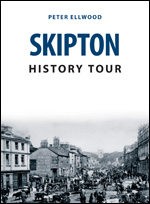 Laycocks can be seen to the right of the awning and the Craven Herald is to the left on this photo, which was taken at 11.16 a.m. The gas lamps and the young lime trees, which were planted in 1897, indicate that this picture was taken c. 1900. Skipton Library is not yet built in this scene, but to the right of the bay window you can clearly see the two premises that were demolished to make way for the new library, which was opened on 16 February 1910 by Sir Mathew Wilson.
Laycocks can be seen to the right of the awning and the Craven Herald is to the left on this photo, which was taken at 11.16 a.m. The gas lamps and the young lime trees, which were planted in 1897, indicate that this picture was taken c. 1900. Skipton Library is not yet built in this scene, but to the right of the bay window you can clearly see the two premises that were demolished to make way for the new library, which was opened on 16 February 1910 by Sir Mathew Wilson.
‘Skipton History Tour’ by Peter Ellwood is published by Amberley Publishing, £8.99
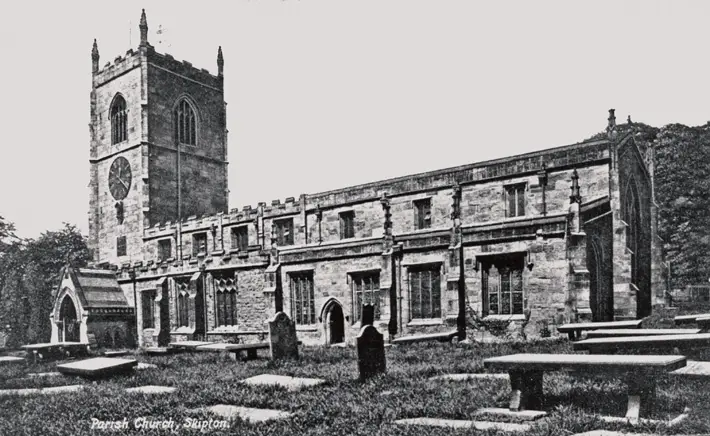
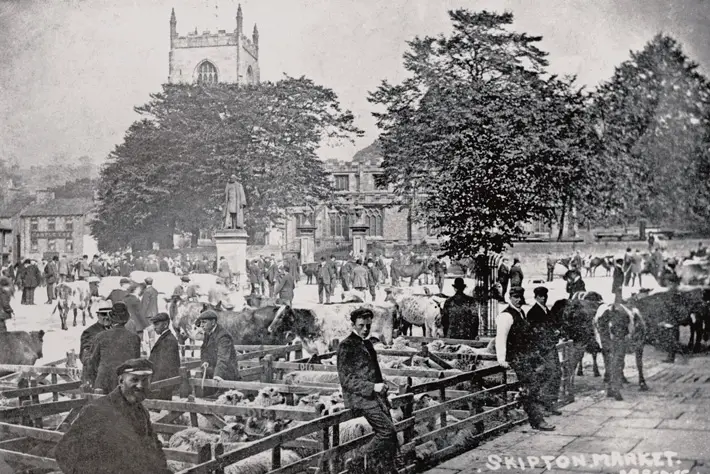
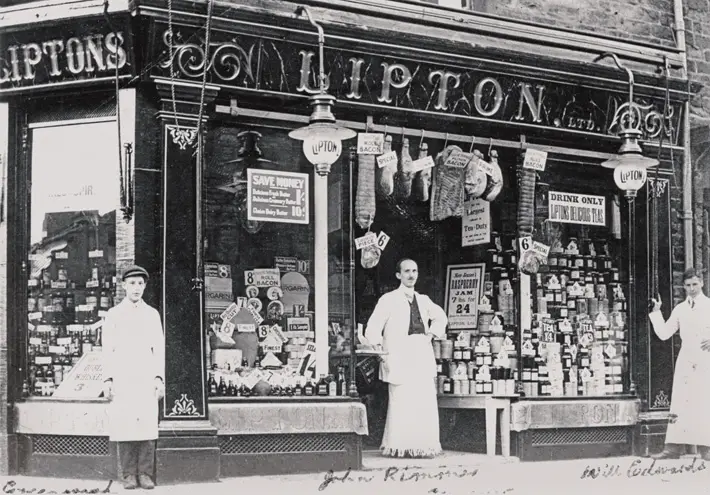
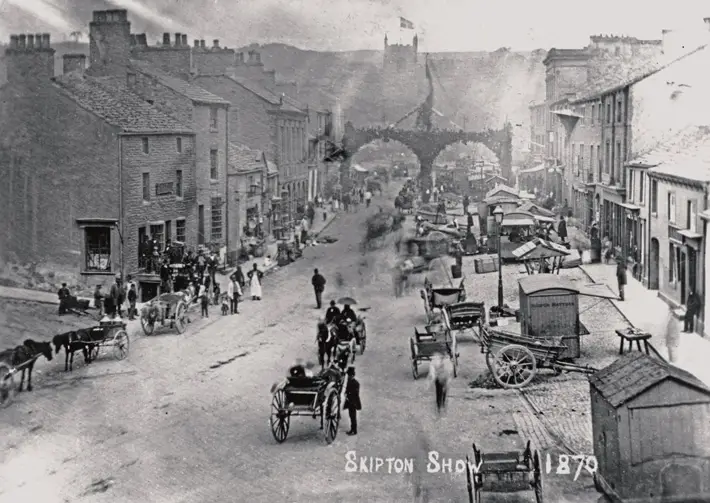
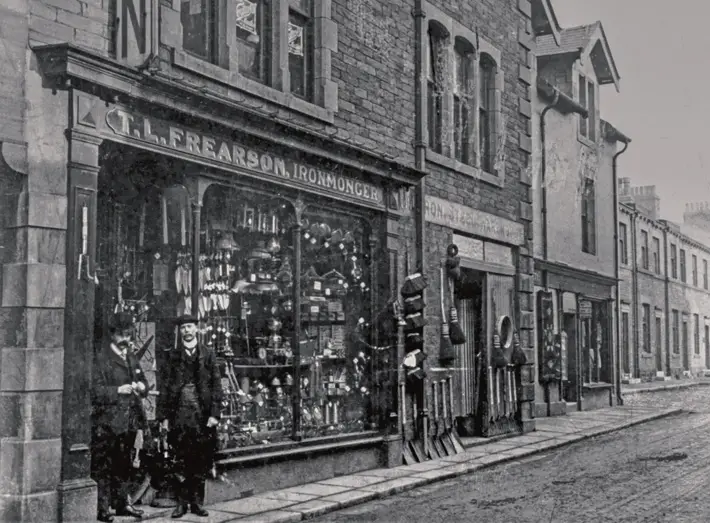
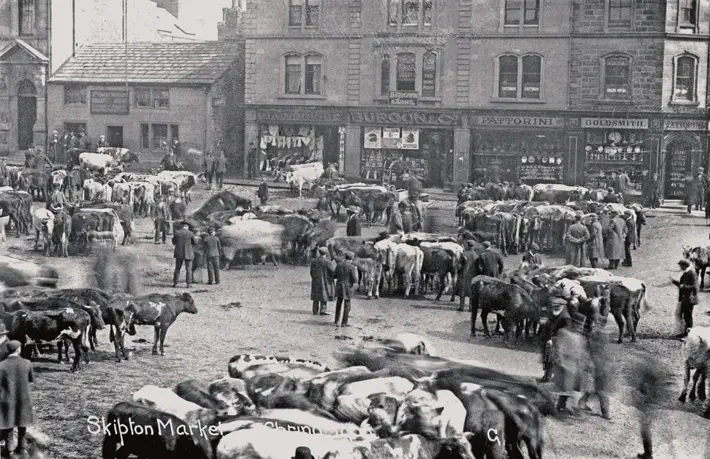
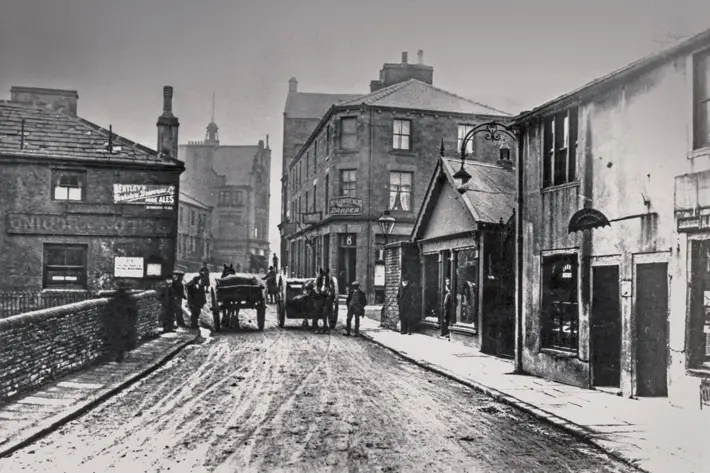
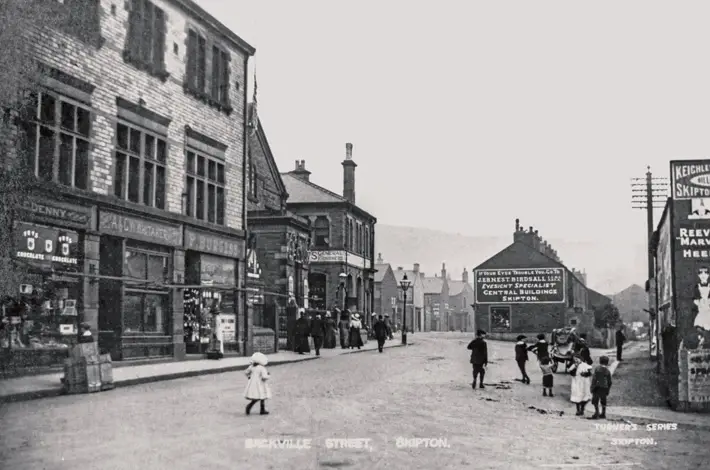
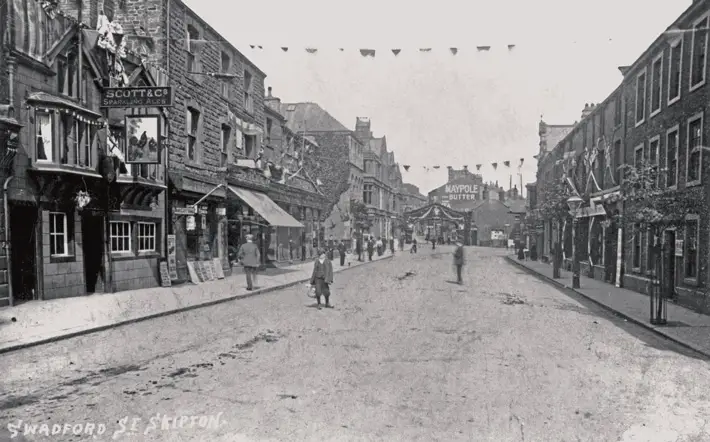
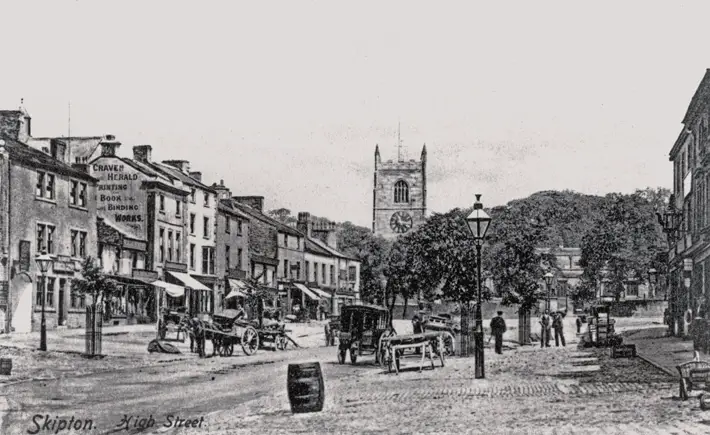
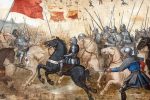
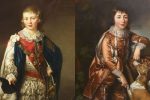
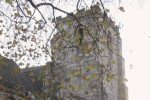





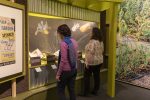
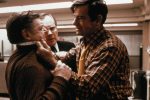
I have a family photograph of a young woman taken about the turn of the 19th cenury. The photographers details on the reverse of the Card de Viste is Brownsworth, Artist & Photographer, 9 Olley Street, Skipton. Could you please tell me the dates in which he practised in Skipton? In anticipation of your reply, many thanks.
The Swadford street photo appears to be facing east, not west as the article says